Moto X Review
by Brian Klug on August 26, 2013 1:30 PM EST- Posted in
- Smartphones
- Qualcomm
- MSM8960
- Motorola
- Android
- Mobile
- Android 4.2
- Moto X
GPU Performance
By Anand Shimpi
Although there’s a CPU core count difference between the MSM8960Pro and the APQ8064 Snapdragon 600 platforms we’ve tested, on the GPU front both use the same IP block: Adreno 320.
The max GPU frequency on the Moto X is 400MHz, compared to 450MHz for the APQ8064 Snapdragon 600 based Galaxy S 4. The difference in GPU frequency is small, and Android games typically have a large CPU bound component so it isn’t totally unfeasible for the Moto X to be among the fastest Adreno 320 phones on the market.
Looking at 3DMark we see just that. The Moto X is the fastest Android phone we’ve tested here. The advantage has nothing to do with GPU frequency however, if we look at CPU frequency over time it’s clear what’s going on.
3DMark
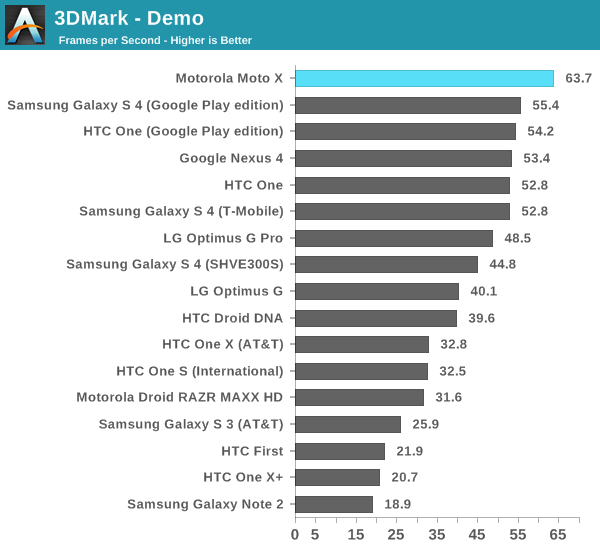
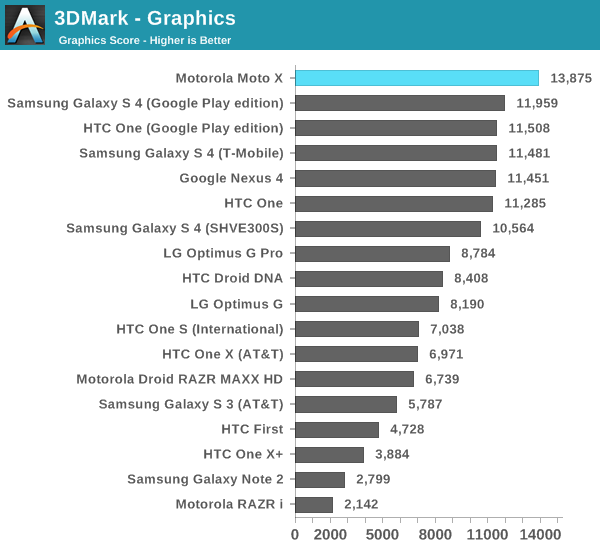

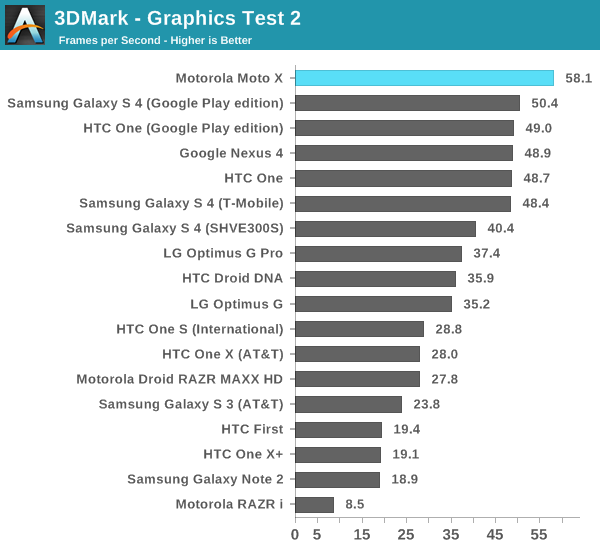
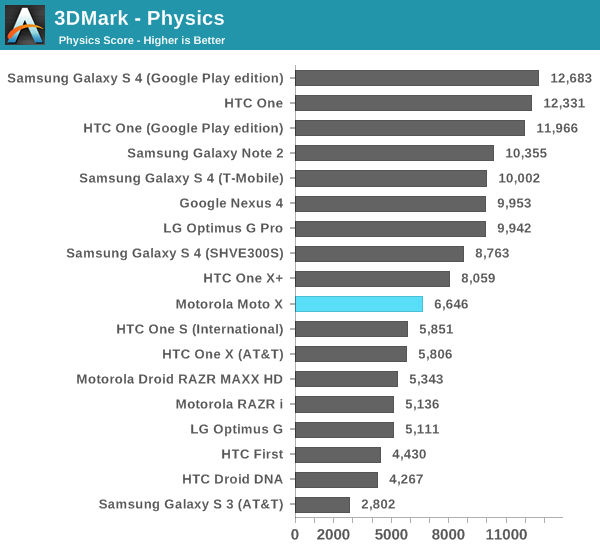
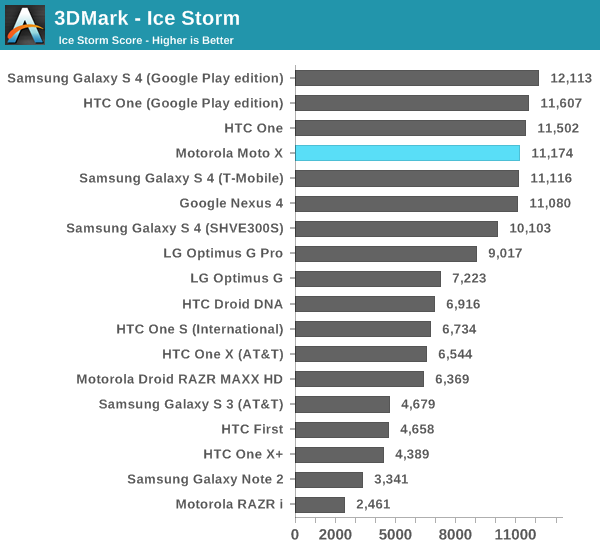
The graphs below show a full 3DMark Ice Storm run, including demo, graphics and physics tests (in that order):
The Moto X’s CPU cores are running at 1.7GHz for all of the 3D tests, and only drop down to lower frequencies during the physics test. The SGS4 by comparison has more cores, running at ~1GHz for most of the benchmark. Given the more CPU bound nature of 3DMark, the Moto X manages to pull ahead.
GFXBench 2.7
BaseMark X and GFXBench 2.7 on the other hand shift the workload to a more GPU bound workload, and we see the Moto X take a couple of steps back.
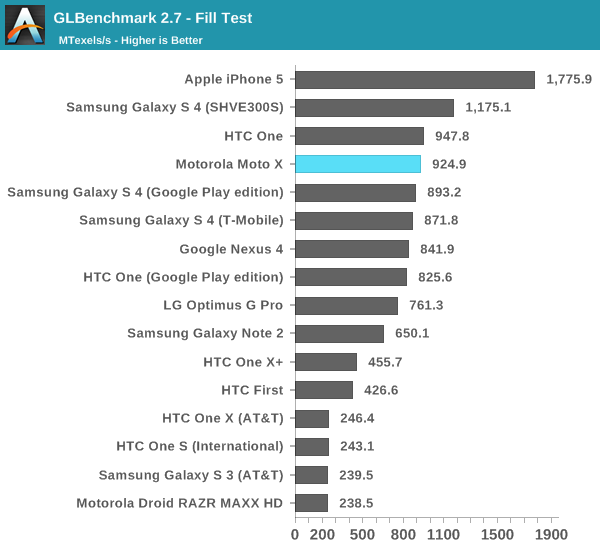

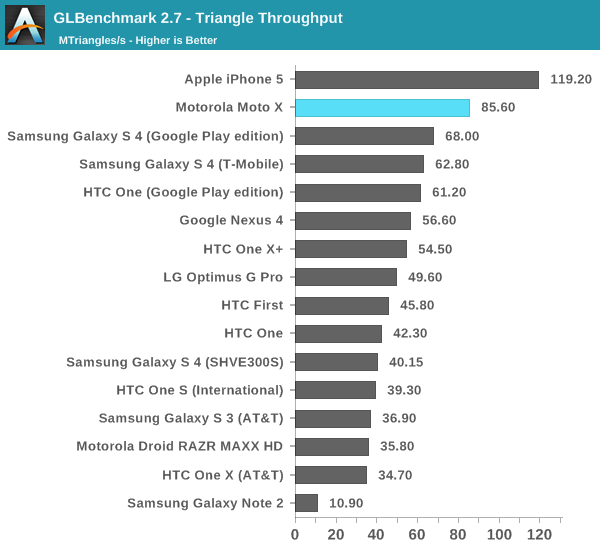
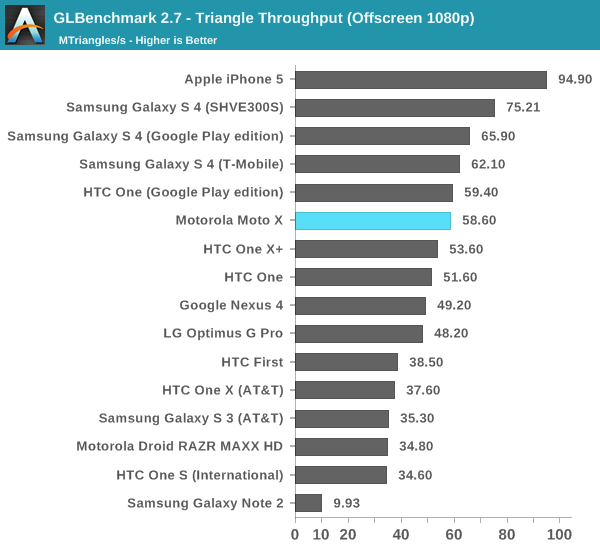
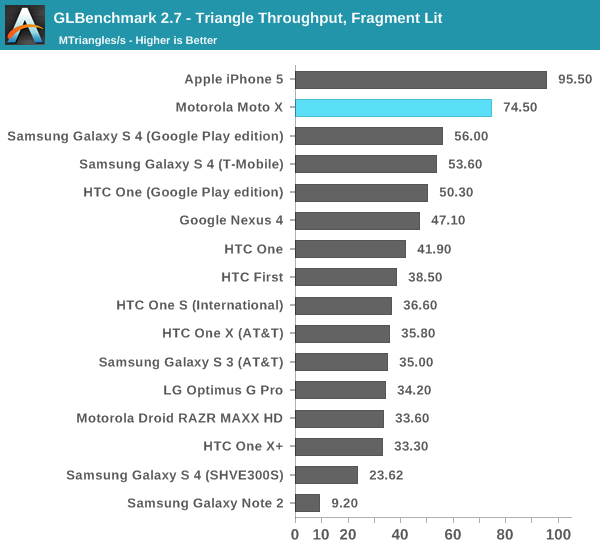
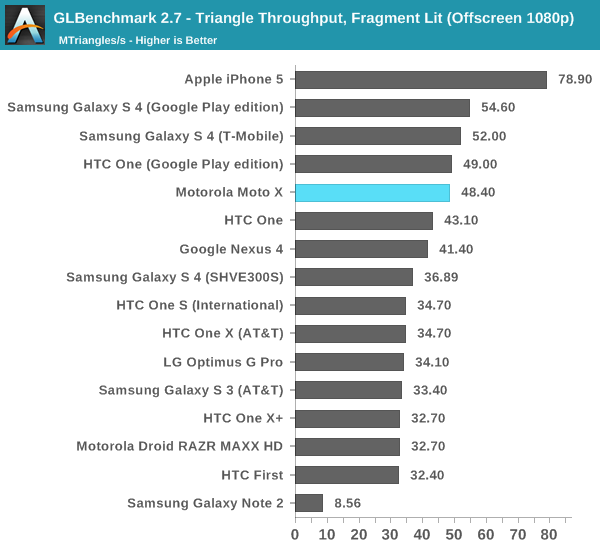
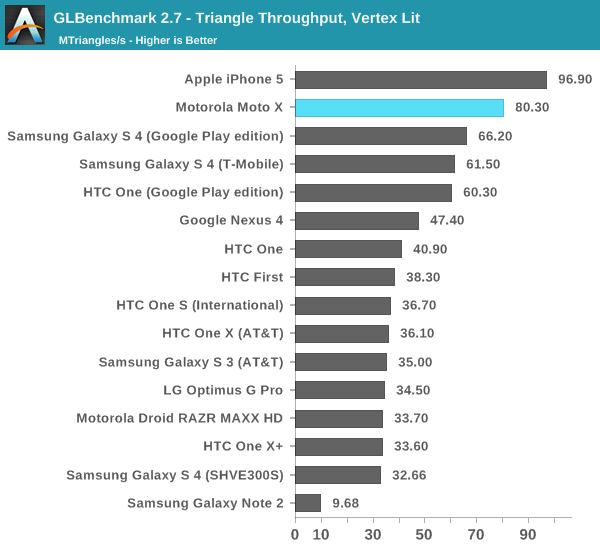

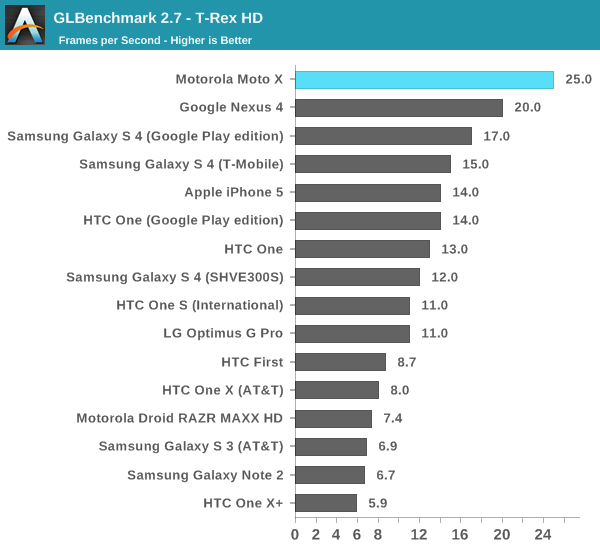
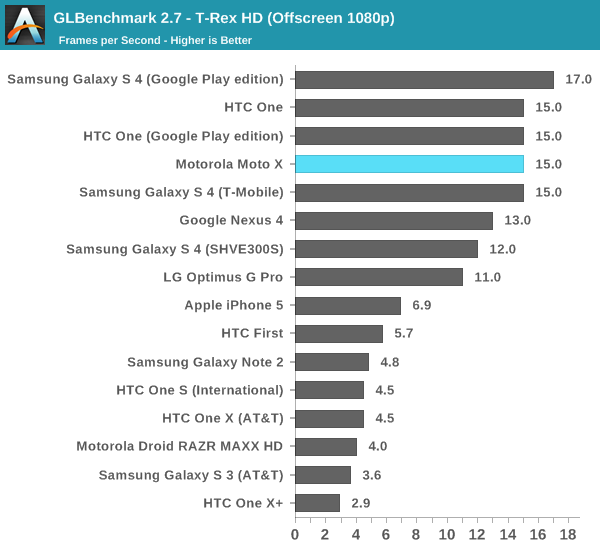
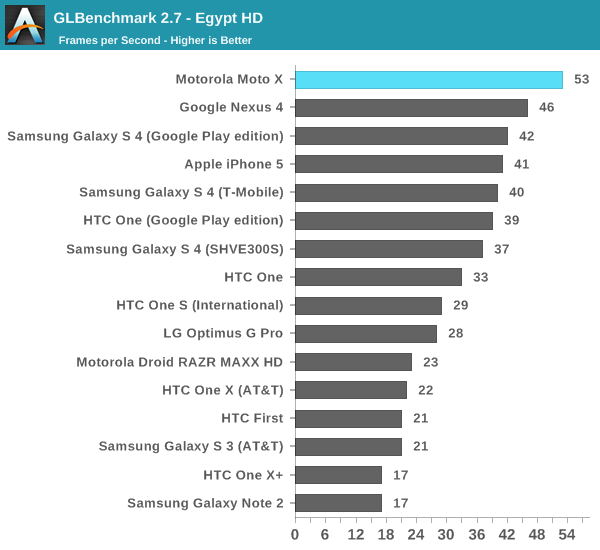
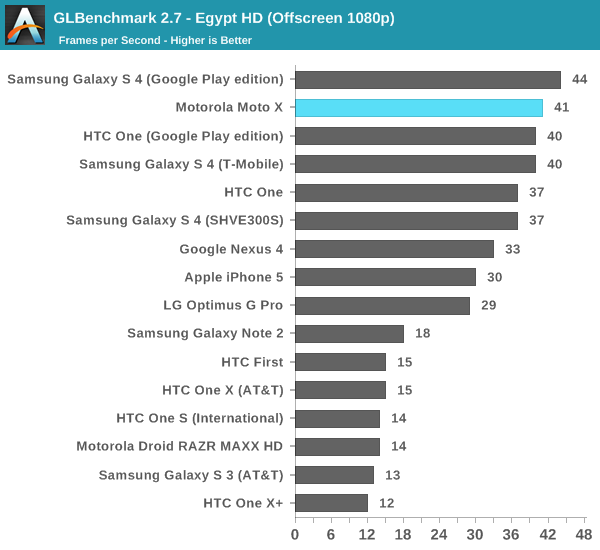
Basemark X
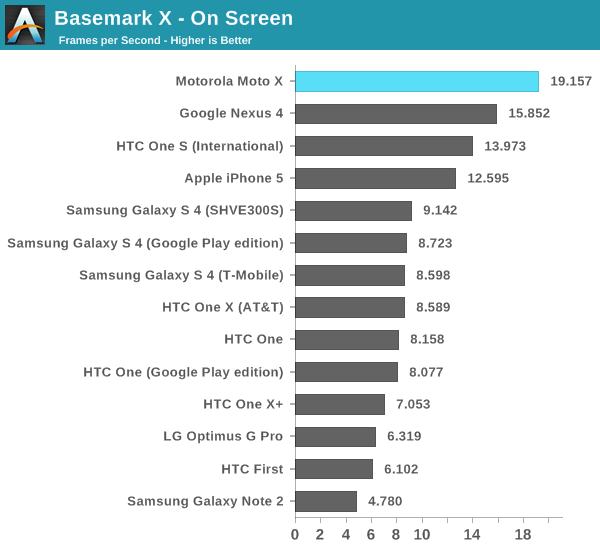

Epic Citadel
Epic Citadel and other native resolution benchmarks benefit from the 720p panel, in addition to the CPU frequency advantages.
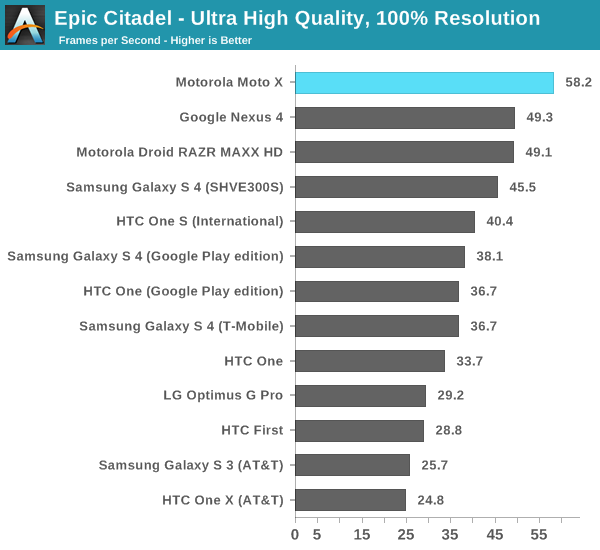


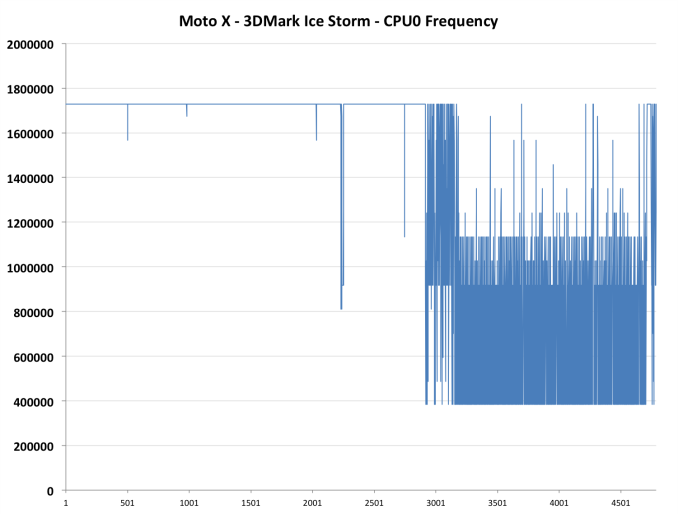
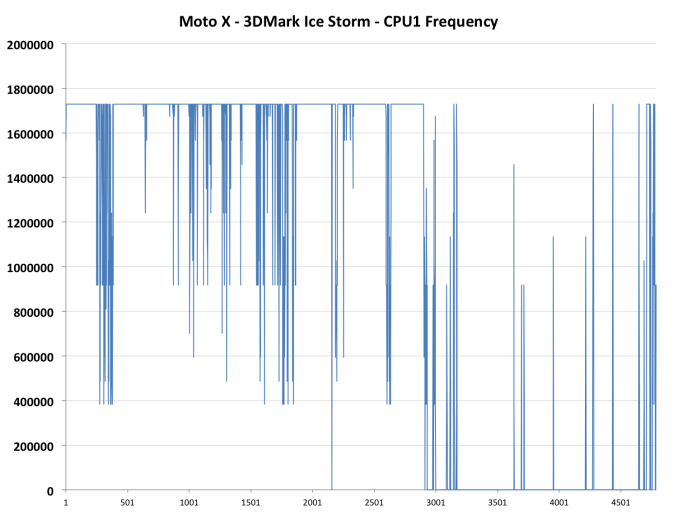
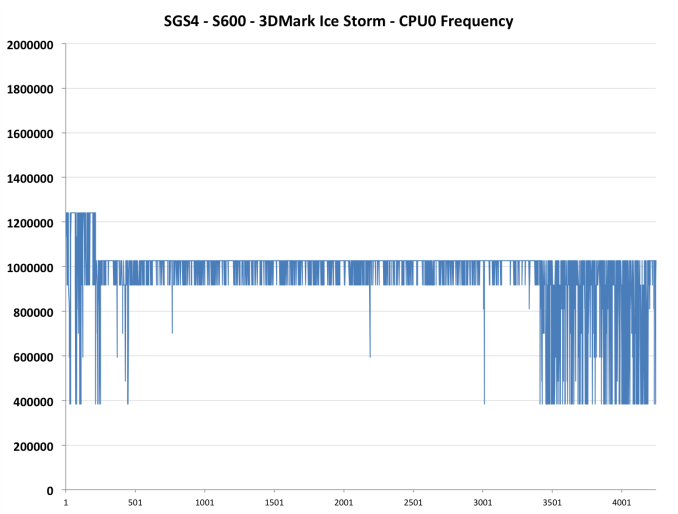
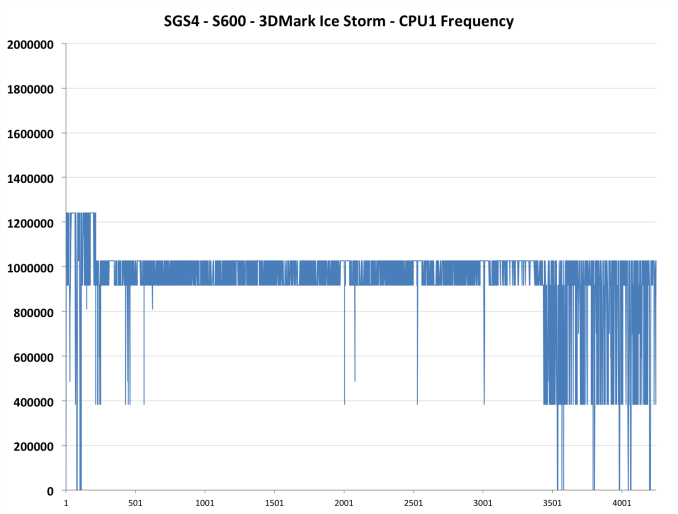
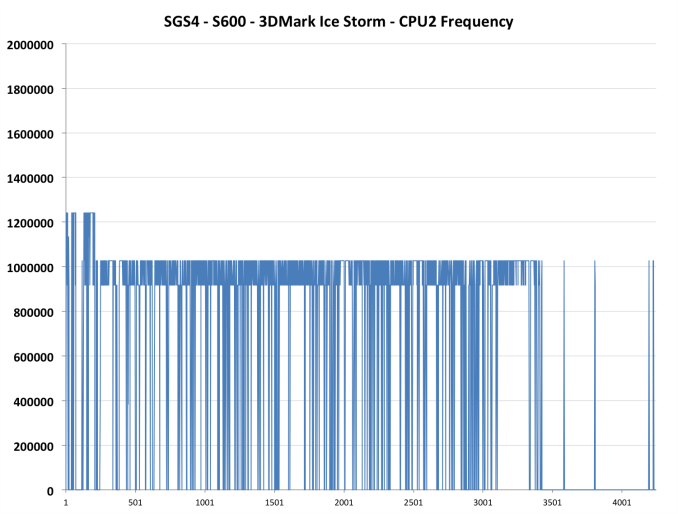
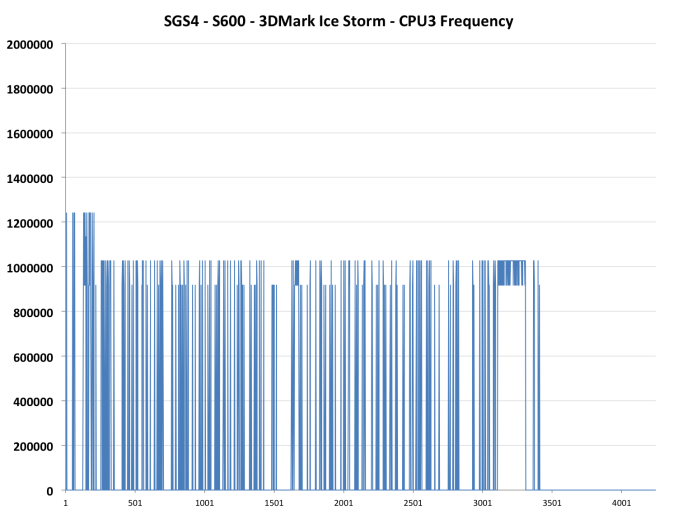








105 Comments
View All Comments
evilspoons - Monday, August 26, 2013 - link
It's too bad we don't get any of the customization options in Canada. Rogers is getting the Moto X, but I think it's just in three solid colours.jjj - Monday, August 26, 2013 - link
Maybe worth mentioning that Atmel has a "Sensor Hub" MCU and it's used in S4 and Surface at least but wasn't highlighted in the marketing so it got zero attention.Honest Accounting - Sunday, September 15, 2013 - link
Does this function without (waking up) the main CPU cores?nerd1 - Monday, August 26, 2013 - link
So called 'customization' has been available for samsung phones for AGES.Heck they even have freedom of customizing the battery sizes!
maltanar - Monday, August 26, 2013 - link
Nice review Brian, thanks. I have a feeling we'll be seeing more and more fixed-function or semi-specific accelerator hardware (read: "cores") in processors in the near future. Not just for mobile applications processors but (over a longer period) for desktop/laptop/server CPUs as well.tim851 - Monday, August 26, 2013 - link
"I’d posit that the optimal size is somewhere just shy of 5-inches diagonal, say between 4.7 and 5, but this is a subject of heated debate."If there's a heated debate, it should be a clue that there is NO OPTIMAL SIZE. People have different use cases for smartphones. I've seen many young girls with tiny hands and huge phones. They don't care for one-handed use. They stuff them in their purses.
I agree with the point about small screen shouldn't mean small specs.
retrospooty - Monday, August 26, 2013 - link
"If there's a heated debate, it should be a clue that there is NO OPTIMAL SIZE. People have different use cases for smartphones. "Exactly. It's totally user pref based. It's like asking what is the optimal automobile size. A guy that lives 50 miles from his work, would probably need a small car with good mileage, where a mother with ith 4 kids is better off with a minivan or SUV, and a construction worker needs a truck to haul things. Is one better than the other? No, unless you are talking to the commuter, mother or construction worker.
As for the phone, looks like a great midrange phone. I like alot of the things MOto is trying to do with it... Should be cheaper though.
scavio - Monday, August 26, 2013 - link
Why should it be cheaper? This isn't a Nexus.If they are lucky they are saving $10 on the SOC vs a Snapdragon 600. The screen might be a $20 savings (once again, if they are lucky). Everything else costs the same as the other flagships.
Impulses - Tuesday, August 27, 2013 - link
It would've been interesting as a low cost mid-cycle Nexus refresh tho, at like $250-300 (32GB if the latter maybe, with only one SKU)... But then the customization aspect would've been a nightmare (Nexus launches are flaky enough as it is, distribution is not Google's thing) and the theories about Google/Moto's impact on other OEM would've raised hell.BallGum - Tuesday, November 19, 2013 - link
It's almost more "Nexus" than a Nexus. I think the Motorola phones are almost as though Google tests features before they make it into Android. With 4.4 KitKat the whole thing is a bit more Googley.I know this sounds slightly outlandish, but it's explained better over at my Blog:
http://theballofgum.blogspot.co.uk/2013/11/motorol...